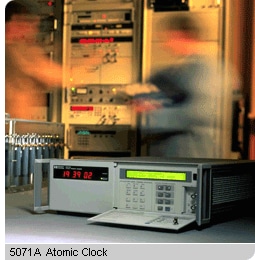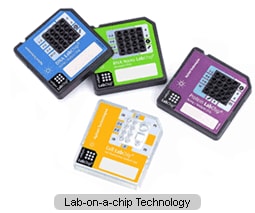Company History Timeline — 1990s
The rate of change accelerates with Web-based information and applications becoming pervasive, competition intensifying and time-to-market cycles greatly reduced.
1990
- HP creates new test and measurement organization and appoints Ned Barnholt to lead it.
- Company enters the sample preparation field with its new super-critical fluid extractor.
- Net Revenue: $13.2 billion; Employees: 91,500.
1991
- Acquisition of Avantek broadens the offering of components for the worldwide communications market.
1992
- New atomic clock is introduced. It becomes the world’s most precise commercially available timekeeping device.
- Test set generates and detects data streams of up to 2.5 billion data bits per second, allowing telecommunications manufacturers to verify the performance of transmission equipment.
- Company introduces its first protein-sequencing system. The device allows for completely automated analysis of proteins and peptide samples.
- Optical spectrum analyzer proves to be an important product for use in the fast growing optical communications field.
- New modular oscilloscope is introduced, to be used in the design of high-speed digital electronics products.
- Introduction of amber and red-orange LEDs expand the range of LED applications in cars, traffic-control signals, and moving-message panels.
- Lewis E. Platt is named president and CEO.
1993
- AcceSS7 network monitoring system allows telecommunications customers to monitor all the elements on SS7 networks from a central location, increasing the efficiency of communications networks.
- HP 3D Capillary Electrophoresis system offers bioscientists leading-edge separation capabilities.
- Company enters the digital integrated-circuit product-test market with the HP 83000 system.
1994
- Revenues reach $25 billion.
- The introduction of the world’s brightest LED . Combining bright output, reliability and low power consumption, it replaces incandescent lamps in many new applications.
- Joint venture is established in China with Shanghai Analytical Instrument Factory.
- The company enters the DNA-analysis field to develop systems and products to be used in pharmaceutical research and the healthcare industry.
- The company marks its entry into the inorganics market with the first inductively coupled plasma mass spectrometer (ICP-MS) that fits on a bench-top. Previously, chemists had to rely on large systems often installed in special laboratories run by specialist operators. The new system brings ICP-MS (for the determination of trace metals) into the routine laboratory environment.
- The Broadband Series Test System emerges as an industry standard. First to test ATM and broadband ISDN networks—and first to integrate testing of all layers of this complex technology—the system helps the industry prove that these new technologies can form the basis of an information highway for transporting voice, data, image and video over the same network.
1995
- Decades of experience in quartz technology and cesium time standards result in timing synchronization products that enable networks to function with higher levels of accuracy and reliability needed to deliver new digital services for voice, data and video communication.
- The industry’s first low-cost, high-speed small infrared transceiver allows wireless “point and shoot” data exchange in a wide range of portable computing applications such as phones, computers, printers, cash registers, ATMs, digital cameras and more.
- The HP 6890 series gas chromatograph system offers new levels of performance and push-button control, eases regulatory compliance, and provides a platform for the next generation of high-performance gas chromatography.
- The second-generation atomic-emission detector (AED) measures most elements at the part-per-trillion level and is the only commercially available AED system for use with gas chromatographs.
- The broadband service analyzer is a new portable tool for installing broadband networks. It represents a breakthrough in ease of use. The analyzer can set up complex tests to measure network quality with the touch of a button, making complex ATM technology accessible.
1996
- Co-founder David Packard dies on March 26.
- Introduction of the 1100 Series liquid chromatograph mass selective detector. The HP 1100 is designed to help chemists support faster product-development cycles (such as those for new pharmaceuticals) and improve the quality of analytical results.
- Creation of a network-timing synchronization for wired and wireless high-speed, digital networks eliminates many problems in transmitting data or images over telephone lines, such as dropped fax lines and modem disconnects, or in handing-off cellular calls from one base station to another, which can also result in dropped calls.

1997
- Acquisition of Heartstream Inc. adds the Heartstream Forerunner to medical products portfolio. The book-size automatic external defibrillator enables trained users such as flight attendants, police and first-aid teams to respond quickly and effectively to victims of sudden cardiac arrest.
- First generation lab-on-a-chip technology integrates a large number of chemical manipulations on a single chip, speeding up chemical analysis and significantly reducing cost and enabling digital information sharing.
- GeneArray Scanner, which can identify thousands of mutations in DNA captured on the surface of a microchip, substantially reduces analysis time.
- LumiLeds Lighting, a joint venture with Philips Lighting B.V., introduces a revolutionary package of signal components for the traffic-light industry.
- Net Revenue: $42.9 billion; Employees: 121,900.
1998
- The innovative HP 3070 Series 3 board-test system allows manufacturers to test printed circuit boards faster and more effectively than before.
- The HP 95000 HSM high-speed memory test system can be used for high-volume production testing of RDRAM chips. These chips operate at 800 MHz and offer memory-chip manufacturers the smallest footprint, lowest cost of test, and lowest-risk solution available.
- The Service Advisor, a low-cost, easy-to-use “tablet” test platform for service installers, accepts a variety of interchangeable modules for telecom testing services ranging from ADSL (asymmetrical digital subscriber line) to ATM transmission.
- The HP E6432A is a new VXI microwave synthesizer suited for a variety of automated-test applications, including field tests, avionics, communications systems and other manufacturing-test applications.
- The TestBook Wireless is an integrated diagnostic solution that offers technicians centralized access to diagnostic and customer-service information in the service bay or field, thereby increasing technicians’ productivity and reducing repair costs for customers.
- Collaboration begins with Caliper Technologies to develop lab-on-a-chip systems that integrates large number of chemical manipulations on a single chip, speeding up chemical analysis and significantly reducing lab costs.